I know you all love it when I review a whisky that you can’t buy. In this case, at least, it works out well because I don’t recommend it anyway. I should start by saying that The Balvenie is one of my favorite distilleries. The 15-year Single Barrel was the first whisky I reviewed on this site, was the third whisky I purchased in bottle form, and remains in my mind one of the best examples of the pure, raw, unadulterated taste of distilled malted barley. The Balvenie’s house style of honeyed, heather-infused malt without overwhelming cask influence is one of the best in the business, and this style is supplemented well by the wide range of available cask finishes, each of which seem to blend perfectly with the base malt. It also represents one of the best values in 12 year-old single malt, in the form of DoubleWood 12-year, which is still the first whisky I recommend to newcomers.
The 12-year Signature, an undisclosed vatting of first-fill ex-bourbon, refill ex-bourbon, and sherry (like the DoubleWood, but without the marketing and probably with a much lower percentage of sherried malt) was produced in a series of small numbered batches. It was launched as a celebration of Malt Master David Stewart’s 45th year in the whisky business.
However, I downright disliked the sample that I tasted recently (unfortunately, I don’t know the batch number). While smooth (not difficult at a dilution of 40% ABV), the best word I can find to describe this one is “bland”. Little of the honey comes through for me, nor any of the florals that I loved in the 15-year Single Barrel. The vaunted cereal notes here are about as exciting as white sandwich bread. Although some bottles can still be found, this malt appears to have been recently discontinued (“retired”) in favor of the much more popular (and much better) Balvenie DoubleWood, which I heartily recommend, and the new 12-year Single Barrel. As far as I can tell, the lowest price for this guy in the US was $56, which is about double what it should be. I love you, Balvenie, but good riddance to this one.
Nose: Yeasty baking bread – almost beery – and abounding with soft cereal notes. After a rest in the glass, it acquires some faint citrus notes – bergamot? or maybe just lemon. The usual Balvenie florals are absent.
Palate: Somewhat watery. Tame on the tongue – “smooth” is, I suppose, the word to use here – a decent balance of toffee, citrus lozenge, and fresh white dinner rolls.
Finish: Equally tame, and of short length. No bitterness, which I appreciate, and the toffee continues. Pleasant, but not exceptional.
With Water: Water increases the yeast component on the nose in exchange for… mmm, nope, that’s it. Predictably, water further dilutes that already diluted palate, but somehow activates something that increases tongue burn. It does give an additional caramel note on the finish, but at too high a cost. Skip the water.
Overall: Uhh. This costs how much? No wonder it was discontinued. With about a quarter of the character of the 12-year DoubleWood, and about a third of the complexity of the 15-year Single Barrel, this is one lame duck of a whisky. While newbies will appreciate its smoothness on the tongue and its lack of bitter notes on the finish, there is little to recommend it in terms of flavor. A pity, since Balvenie is one of my favorite distilleries. I cannot recommend this release, and it’s just as well that it’s been discontinued. Get a bottle of the DoubleWood instead.


About The Distillery
Built by the Grant family in 1892 as a sister distillery to next-door Glenfiddich, The Balvenie still remains in the ownership of the family. Unusual for a distillery of this size, Balvenie still operates its small floor maltings, grows some of its own barley, and has an on-site cooperage. It now has eight stills, which some think are the key to its nutty, honeyed style – they are fat and have short necks.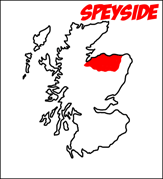


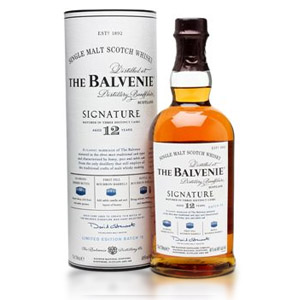
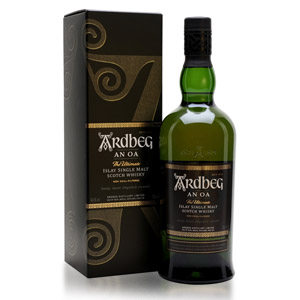
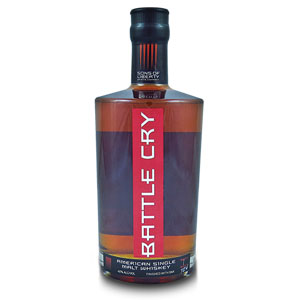
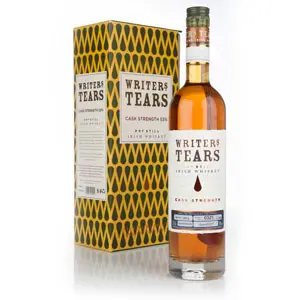
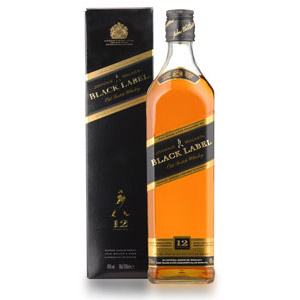
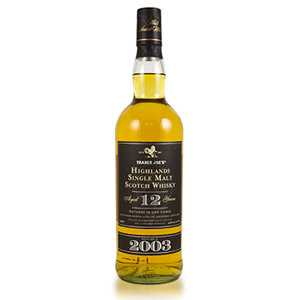
Well this was a bummer to read. I have a bottle of this sitting unopened that I picked up on clearance over a year ago. I guess I’ll let it collect dust for a little longer!
Craig, I was disappointed too, I expected it to be better. There’s always the possibility that my sample was sub-par. You may be able to find something in it that I missed. Subtle whisky can be like that – subtly artful to some, boring to others.
I had a dram while I was in Scotland that was pretty respectable, so it might have been a batch issue.
It’s a shame that Balvenie Founder’s Reserve, which was the same blending strategy with a bit younger malt, went away. I tried some of that last year and it was just exceptional. Head and shoulders above the current DW.
I tried it at the Nth Whisky show and hated it! I found it for sale here in Las Vegas for $78 (who are you kidding!) which is funny cause the amazing 15yr is $68. Balvenie is my favorite but like you said this was a swing and a miss.
(unrelated the 40yr Balvenie isn’t very good either… but I admire they keep trying)
You mean a swig* and a miss? 😛
LOL! exactly..my mistake
Kind of off-topic Scotchnoob (your comment on the yeastiness made me think of this), but I had noticed something recently – distilleries like to emphasize the role of casks, the shape of stills, length of aging, etc when discussing the quality of their whiskies. Just as interesting to me is what they DON’T mention.
For example, whisky is said to have only three ingredients – water, yeast, and barley. But distilleries don’t go out of their way to emphasize the quality of any of these. Maybe people find yeast gross and the industry doesn’t want to draw attention to the fact that most of its barley comes from outside of Scotland (but then, so do most of the casks). Jack Daniels makes a big deal out of its iron free water, but I don’t see Glenlivet talking up Josie’s Well. I just think it’s weird that, of all the factors that distilleries emphasize in talking about quality of their whisky, the raw ingredients don’t come up.
Similarly, I notice that Scotch whisky distilleries make heavy use of bourbon casks, but don’t seem to care what kind of bourbon (or even Tennessee whisky) they once contained. With the sherry casks, they usually specify whether it’s Pedro Ximenez, Oloroso, etc. But you don’t see anyone advertising that they only use bourbon casks from a super-premium brand like Bookers or Pappy’s Van Winkle. I know that most bourbon casks used in the Scotch whisky industry are cobbled together from a variety of casks and keeping track of what each stave originally held may be too hard, but not all bourbons are created equal – it seems like boasting about using casks from the highest quality bourbon would be a great way to differentiate your product.
Eric, awesome points. You’re very correct about these, although I thought of a few exceptions. Four Roses is very up-front about its yeast strains and the effect they have on the mashbill recipes used by the distillery. I haven’t sampled enough Four Roses to know if the yeast strains show up as single-barrel differences, but at least they talk about it. I’m pretty sure all of the Scottish distilleries use the exact same industrial yeast strain, or a very small number of “standard” strains, so talking about them doesn’t do any good to differentiate the brands. Some experimentation would be nice to see, though.
I think barley is starting to get more attention, with amazing products like Bruichladdich Bere Barley (which is the best Bruichladdich I’ve ever had), and the “farm” distillery releases like Kilchoman’s 100% Islay. I think we’ll continue to see barley strains (and local sourcing) popping up as differentiators in both the scotch and international whisky markets.
As for bourbon aging, it must be a warehousing/bookkeeping issue, as you mention… PX casks are precious and worth keeping track of, but Bookers vs Jack Daniels is not something that’s going to show up on the label, so probably doesn’t get much attention. I think with the exception of Diageo, most Scottish distilleries get their barrels from resellers or clearinghouses and, as you said, they arrive in large lots of staves.
All good food for thought. Thanks, Eric!
Oddly enough both this and the Doublewood are the exact same price where I am (Vancouver, Canada).
Sadly both are $90 which seems way too high for me. I’ve had the Doublewood in a bar once and thought it was great, but I can get better bottles for $90. I have no idea why Balvenie charges such a premium, seeing as other brands only price about 25% higher than some of the prices in the US of A.
One of those mysteries I guess.
It’s probably not so much that The Balvenie charges more, but rather that the importer/distributor for your area has a higher markup for Balvenie, for whatever reason. You’ll go crazy trying to understand whisky pricing. 😉
I have to disagree with this. I’m in the uk though, so perhaps your bottle didn’t travel so well?
I much preferred this to the standard 12yr, albeit it wasn’t as good as the caribbean cask or those further up the chain. Over here, it was almost the same price as the 12yr, and at least £10 cheaper than the next one up, but much smoother with a sweeter flavour profile. Perhaps your preference for less say flavours came into it?
Hi Blades! I welcome disagreement on my reviews – whisky appreciation is very personal, and everyone has their own unique take on every dram. I was struck by how bland this sample was – which is possibly due to batch, possibly due to travel from the UK, or possibly even from mis-handling by Master of Malt (although that would be the first time such a thing has happened to me). I wish I had found it to be sweet, which would have improved it in my opinion. I tasted it next to the DoubleWood 12 and couldn’t find a single redeeming thing about it. Must have just struck a nerve or something. 😉 Cheers, and thanks for the comment!